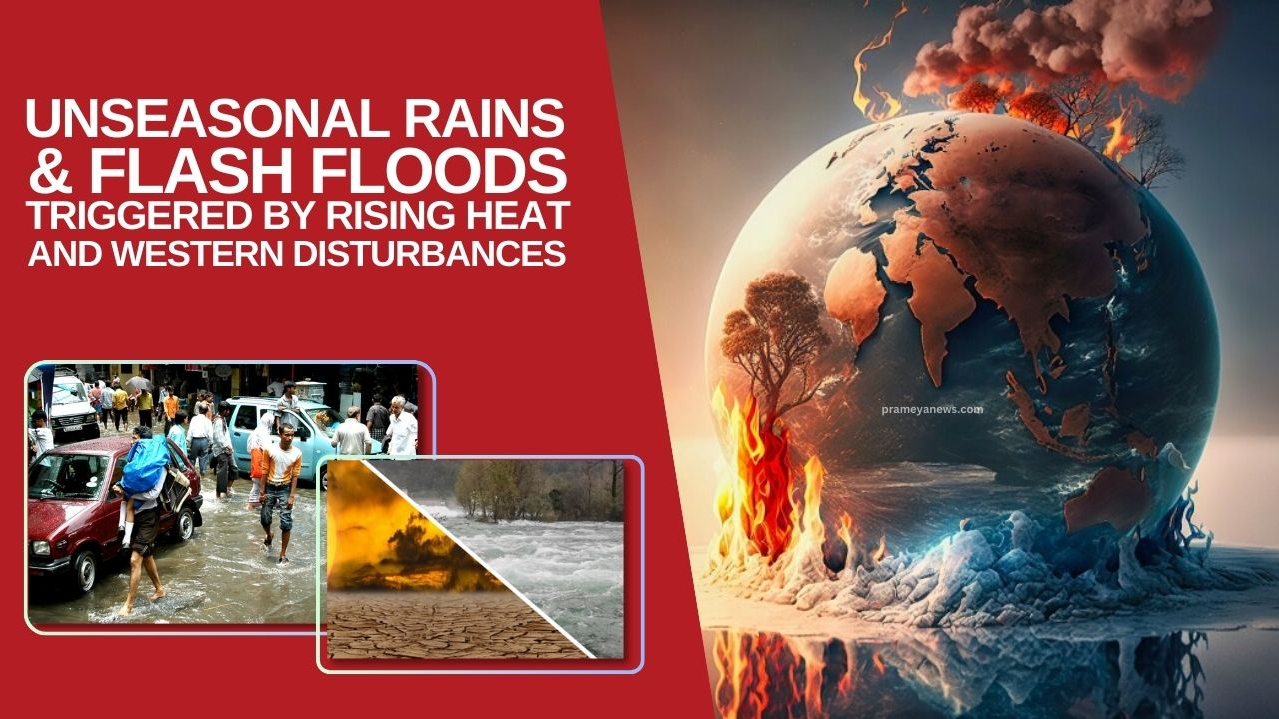

Recent unseasonal heavy rainfall and strong winds across Delhi and surrounding regions, while offering temporary respite from early summer heat, point to a more profound meteorological shift. These weather events, attributed by the India Meteorological Department (IMD) to a fresh Western Disturbance, are increasingly indicative of a larger pattern: the significant alteration of these crucial weather systems due to rising global temperatures. New analyses and scientific studies indicate that climate change is not only increasing the frequency of Western Disturbances but also changing their behavior, leading to more intense weather events and unseasonal occurrences.
Understanding Western Disturbances
Western Disturbances (WDs) are essentially eastward-moving weather systems laden with moisture that originate in the Mediterranean region and travel across Iran and Afghanistan before reaching the Indian subcontinent. These systems draw moisture from the Mediterranean Sea, Black Sea, Caspian Sea, and, increasingly, the Arabian Sea. Classified as extra-tropical cyclones, they form due to the interaction between cold polar air and warmer tropical air masses. Their path and intensity are significantly influenced by the subtropical westerly jet stream—a powerful current of high-altitude winds flowing west to east over the Himalayan and Tibetan highlands. Traditionally, WDs are most active during the boreal winter months (December to March), playing a critical role in the weather patterns of northwestern India, Pakistan, Afghanistan, and Tajikistan by bringing vital winter precipitation.
Climate Change's Impact
Mounting evidence suggests that climate change is fundamentally altering the established characteristics of Western Disturbances:
Consequences and Outlook
The changing patterns of Western Disturbances are already having tangible effects. The increased frequency and intensity, particularly during March and April this year, have been linked to heavy rainfall, flash floods, and landslides in Himalayan states such as Jammu & Kashmir, Himachal Pradesh, and Uttarakhand. Paradoxically, this increased WD activity also contributed to keeping prolonged heatwaves at bay in the northwestern plains during the same period.
However, the overall trend is towards greater weather unpredictability and an increased risk of extreme events. Western Disturbances used to be fairly predictable. Now, they are becoming more intense, erratic, and unseasonal. This is creating a new normal. This change brings major challenges for agriculture, water resource management, and disaster preparedness across the affected regions. Understanding and adapting to these climate change-induced shifts in major weather systems like Western Disturbances is becoming increasingly critical.